Masterpiece Story: Bisj Pole by the Asmat People
Bisj Pole is a masterpiece of indigenous art from the Asmat people of Western New Guinea, Indonesia. The work is housed at the Musée du Quai...
James W Singer 29 June 2025
1 December 2024 min Read
Composition with Red, Blue and Yellow is a golden example of Abstraction, De Stijl, and Constructivism. It purges the art of individual subjects by reducing images to the universal elements of color, line, and direction. Primary colors are the least mixed. Straight lines are the least curved. Cardinal directions are the least varying. They are pure, direct, and fundamental. Universal elements create a universal reality where a total integration of art and life can exist.
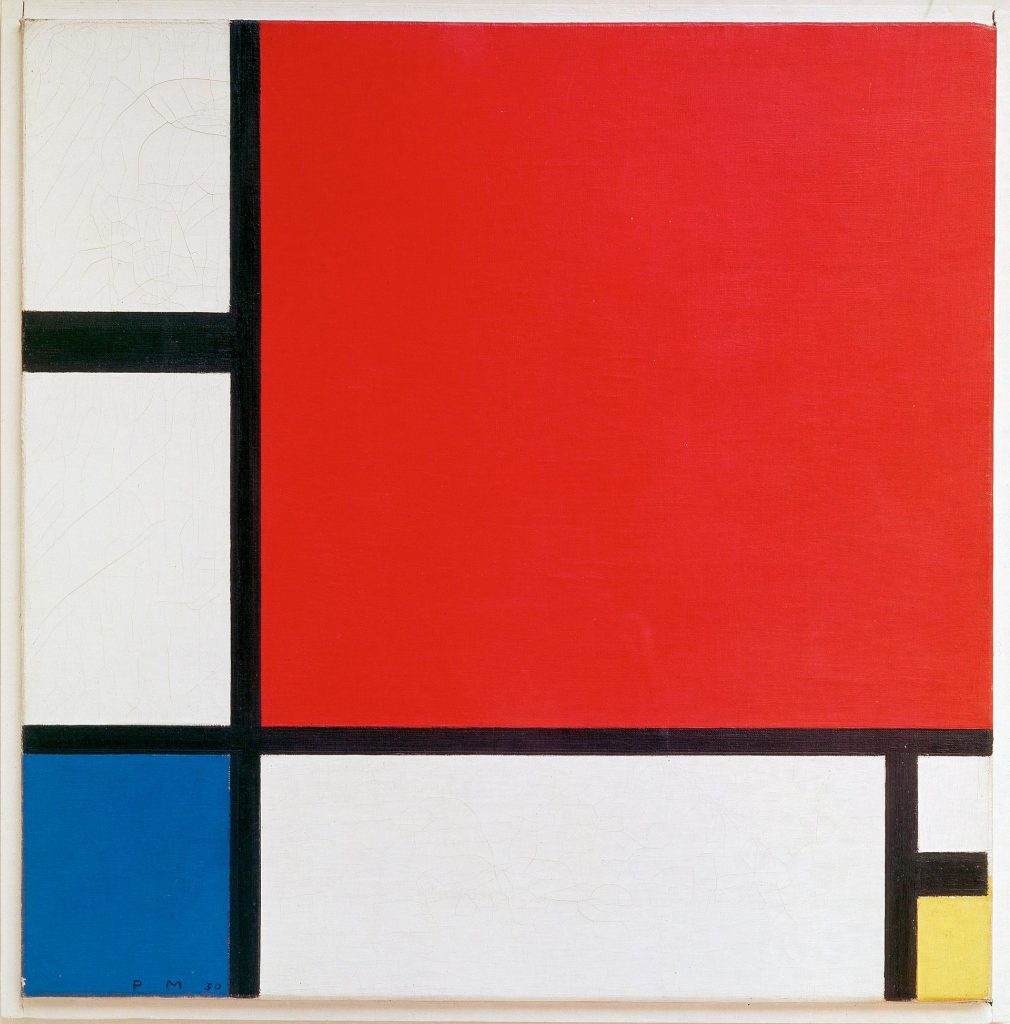
Piet Mondrian, Composition with Red, Blue and Yellow, 1930, Kunsthaus Zürich, Switzerland. Wikimedia Commons (public domain).
Piet Mondrian (1872-1944) lived in a Europe shaken by the violence of World War I (1914-18). It was a time of societal reevaluation and self-exploration. In 1917 Mondrian co-founded De Stijl (The Style), a Dutch magazine filled with utopian ideals proposing the total integration of art and life. It was during these formative years that Mondrian began moving towards abstraction. Like his Russian contemporary, Wassily Kandinsky, Mondrian began with representational landscapes but slowly moved towards more abstract compositions. By 1920, Mondrian had developed Neoplasticism (pure plastic art), his famous signature style of reducing compositions to cardinal lines and primary colors.
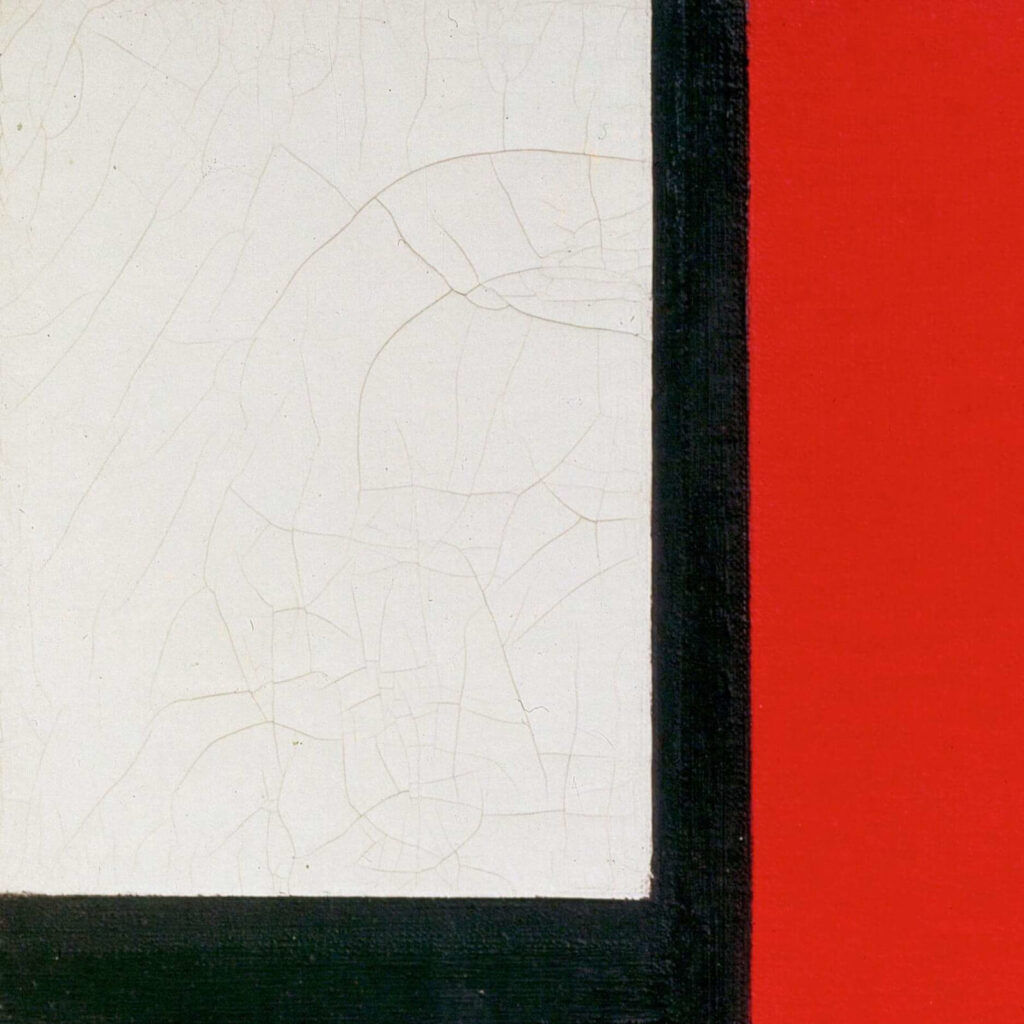
Piet Mondrian, Composition with Red, Blue and Yellow, 1930, Kunsthaus Zürich, Switzerland. Detail. Wikimedia Commons (public domain).
Composition with Red, Blue and Yellow represents Piet Mondrian’s artistic highpoint of purity and sobriety. Created in 1930, the oil on canvas painting measures a square 1’ 5.7” x 1’ 5.7” (45 cm x 45 cm). It is probably Mondrian’s most famous canvas despite its diminutive size. However, within its small borders are the attempts of absolute harmony and universal appeal. There is almost something psychologically satisfying to the composition as we respond to the simple lines, bold colors, and rectangular shapes.
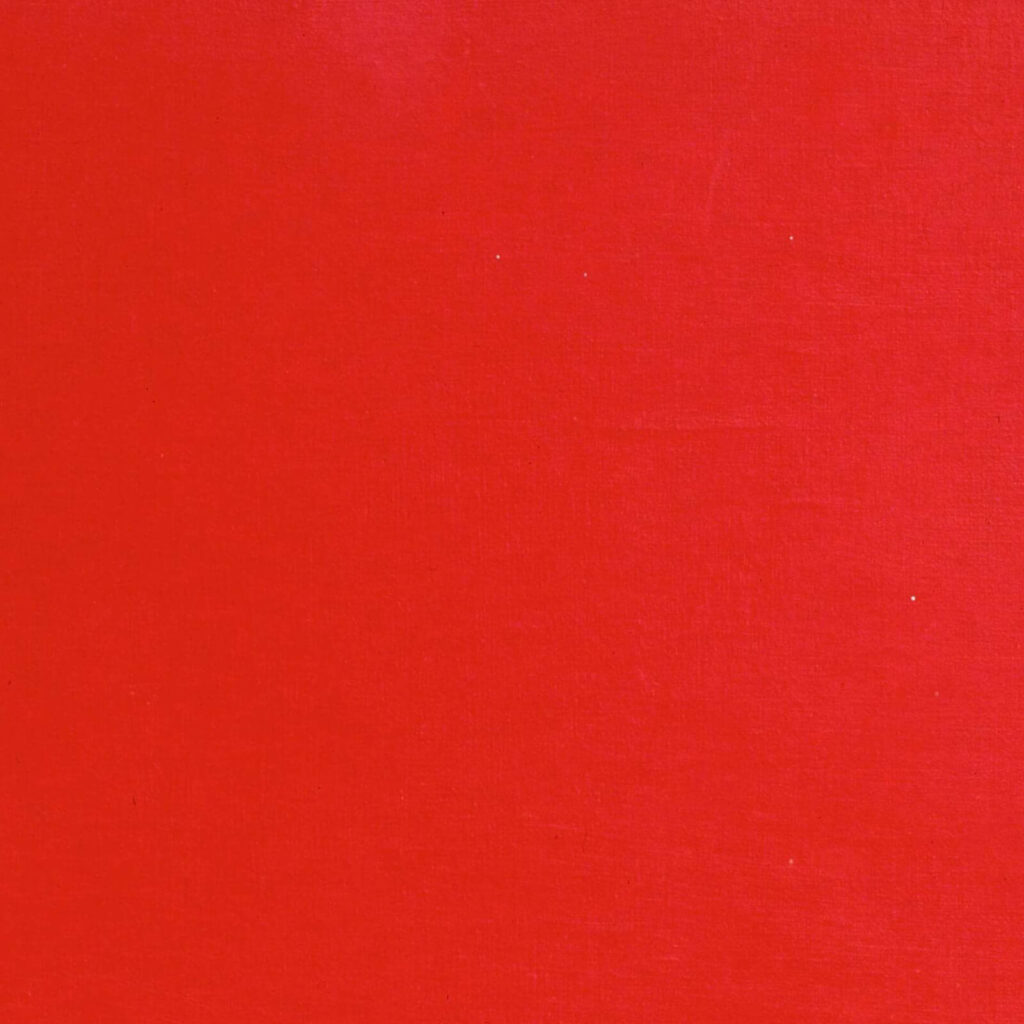
Piet Mondrian, Composition with Red, Blue and Yellow, 1930, Kunsthaus Zürich, Switzerland. Detail. Wikimedia Commons (public domain).
The painting is an arrangement of black lines, white voids, and color blocks. The lines are limited to horizontal and vertical directions while the colors are limited to red, blue, and yellow. Mondrian believed that cardinal directions and primary colors were universal elements which lead to a universal beauty of balanced contrasts and dynamic tension. Art was a moral code that through severity and austerity could produce beauty and sensuality. While the composition lacks any diagonal lines and mixed colors, it is paradoxically satisfying and seductive. It triggers the mathematical pleasure senses with the same satisfaction of decluttering a filled room, organizing a prized collection, or discovering the solution to a complex problem.
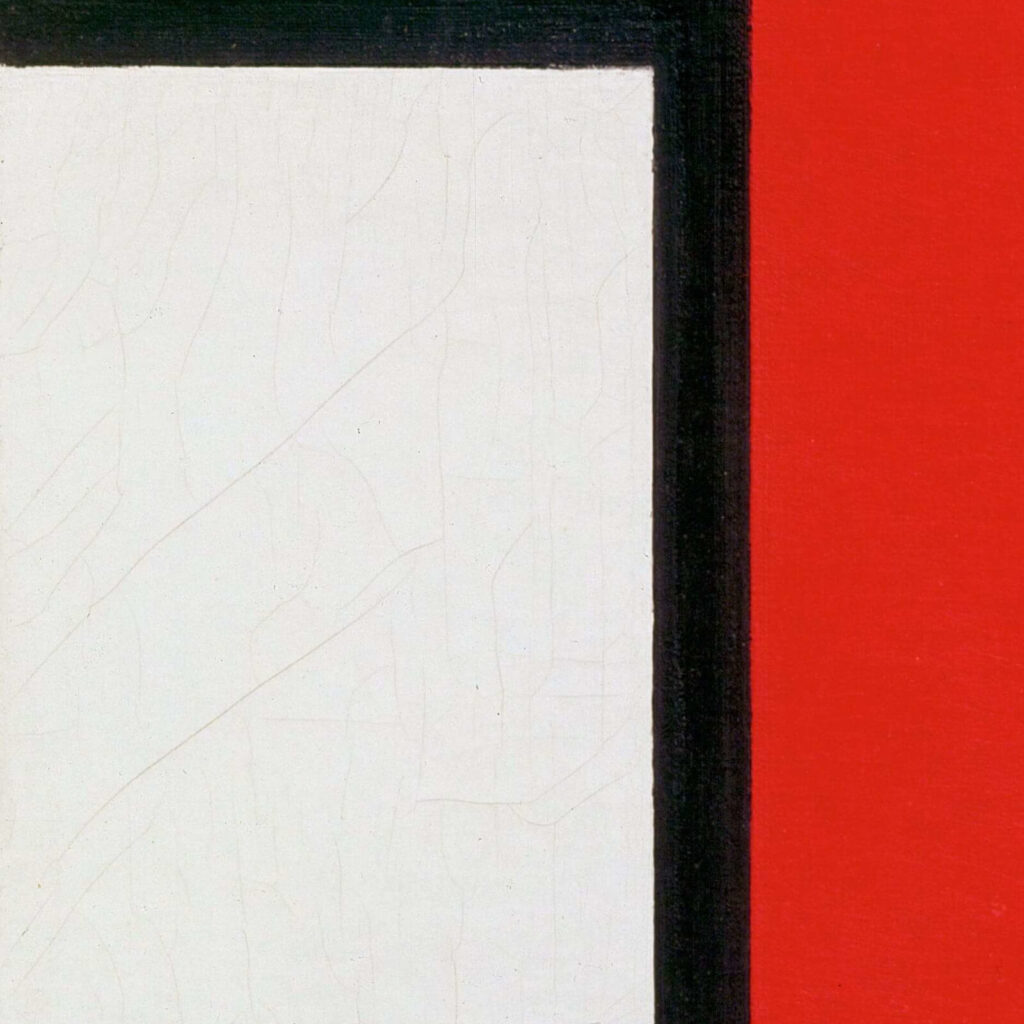
Piet Mondrian, Composition with Red, Blue and Yellow, 1930, Kunsthaus Zürich, Switzerland. Detail. Wikimedia Commons (public domain).
Composition with Red, Blue and Yellow is strongly dominated by red. There is an apparent color hierarchy with red as the most prominent, followed by blue, and then finally yellow. If the painting’s dimensions are split into nine even squares the color hierarchy becomes extremely apparent. The red easily fills four squares, the blue dominates one square, and the yellow fills approximately one-fourth of a square. The colors are reduced by quarters in a mathematical pattern of 4 : 1 : ¼, thereby creating a geometric construction with hierarchical proportions.
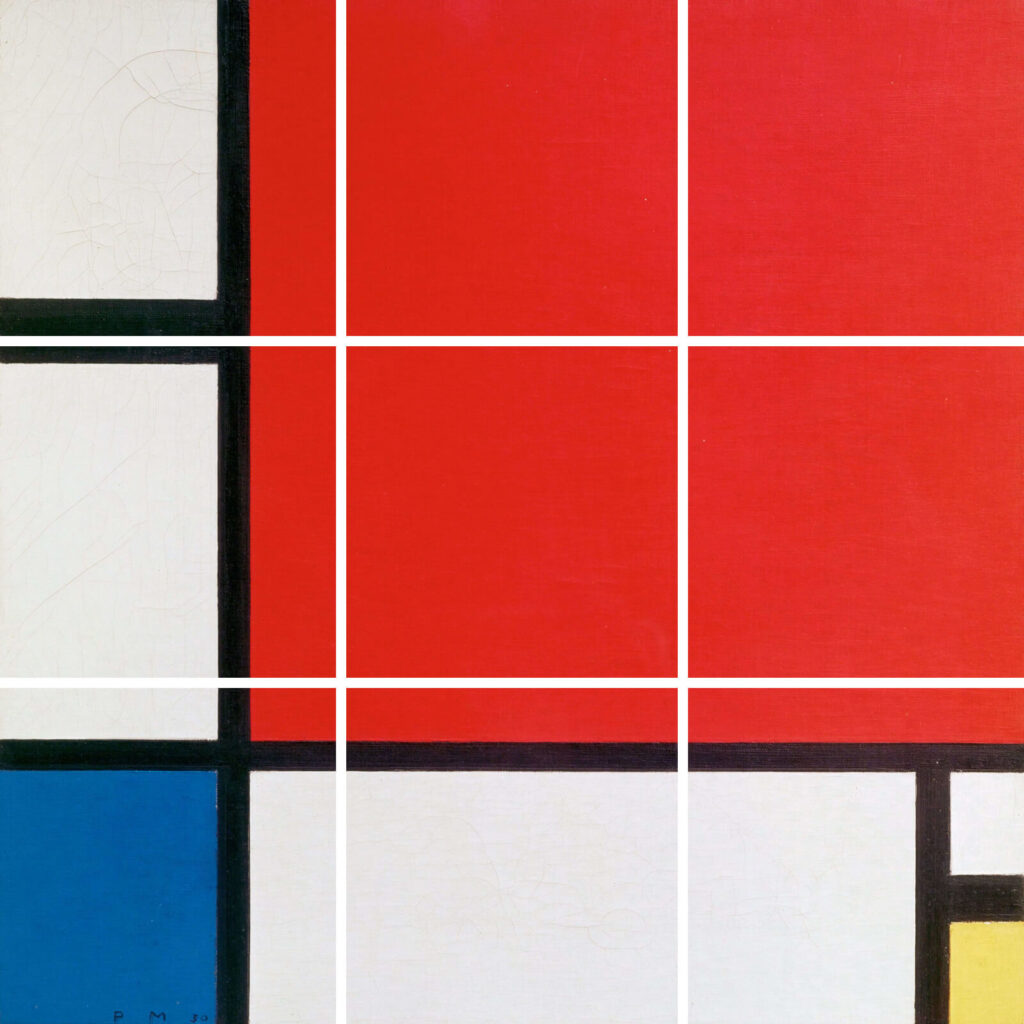
Split Composition of Nine Squares. Piet Mondrian, Composition with Red, Blue and Yellow, 1930, Kunsthaus Zürich, Switzerland. Detail. Wikimedia Commons (public domain).
The red block fills ⅔ of the painting’s width and ⅔ of the painting’s height. It is 4/9 or almost half of the composition. The red’s dominance injects a strong accent of color which develops the piece’s character and boldness.
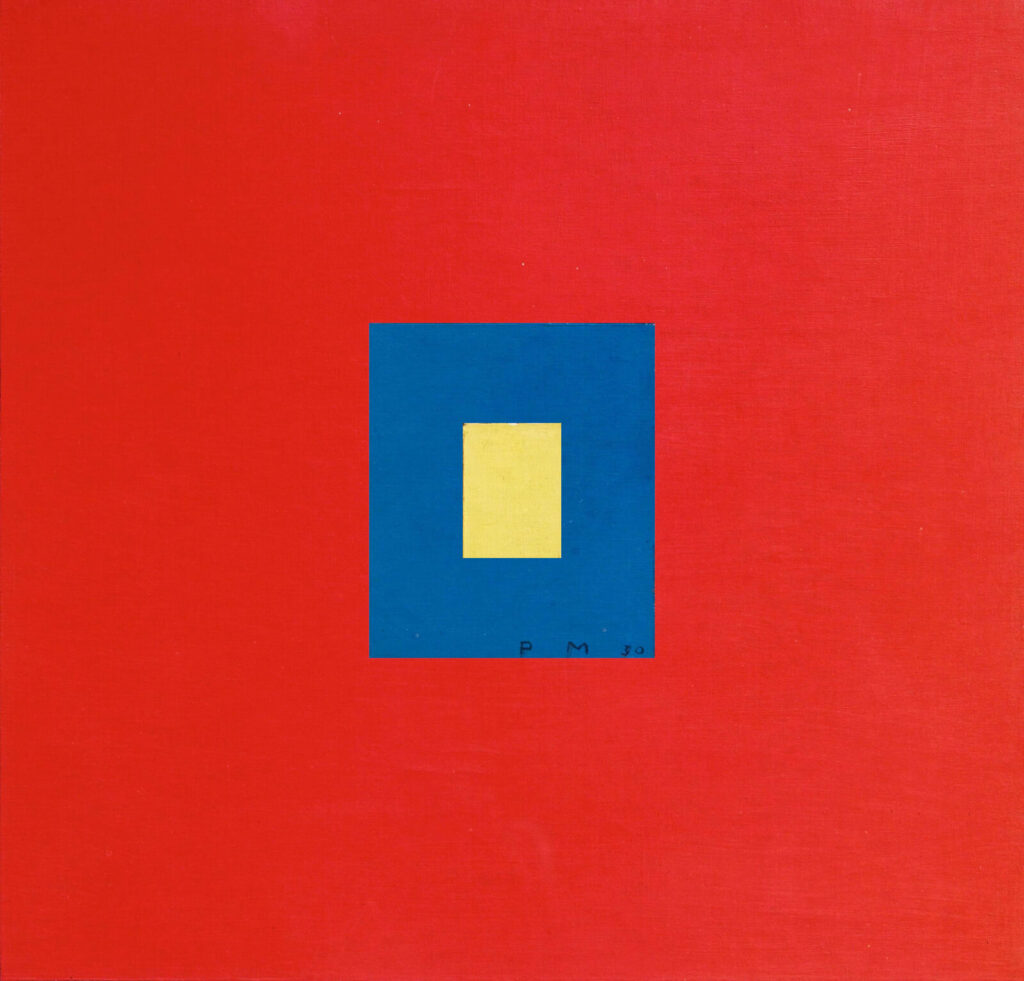
Superimposed Composition of Color Blocks. Piet Mondrian, Composition with Red, Blue and Yellow, 1930, Kunsthaus Zürich, Switzerland. Detail. Wikimedia Commons (public domain).
Composition with Red, Blue and Yellow is also strongly dominated by lines. Like the colors, there is a hierarchy in the lines’ prominence and importance. Only two lines in the painting cross the composition’s entire dimensions: a vertical line ⅓ from the left and a horizontal line ⅓ from the bottom. Each line spans the respective height and width of the canvas. They define the left and bottom borders of the red block and bisect the painting into 4 uneven quadrants. The other three lines in the painting are smaller and hierarchically less important. They define smaller spaces without crossing each other.
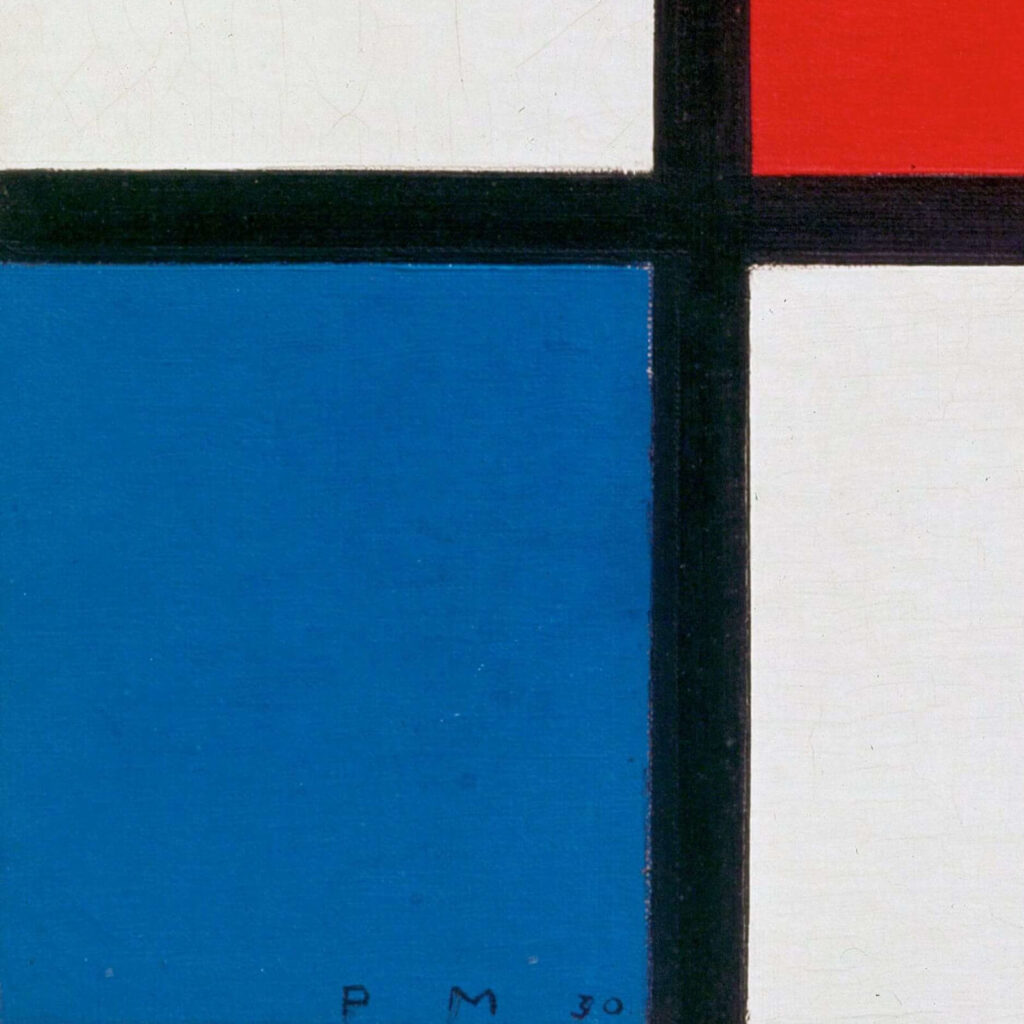
Piet Mondrian, Composition with Red, Blue and Yellow, 1930, Kunsthaus Zürich, Switzerland. Detail. Wikimedia Commons (public domain).
The painting has a cautious and painstaking arrangement. It is methodical with a mathematician’s precision. It is no surprise that it was commissioned by Piet Mondrian’s friend Alfred Roth, a Swiss modernist architect, who admired Mondrian’s elemental foci of lines and space. Roth’s architectural plans were influenced by Mondrian’s spatial arrangements and therefore had a cleaner geometry compared to Roth’s colleague, the famous Le Corbusier.
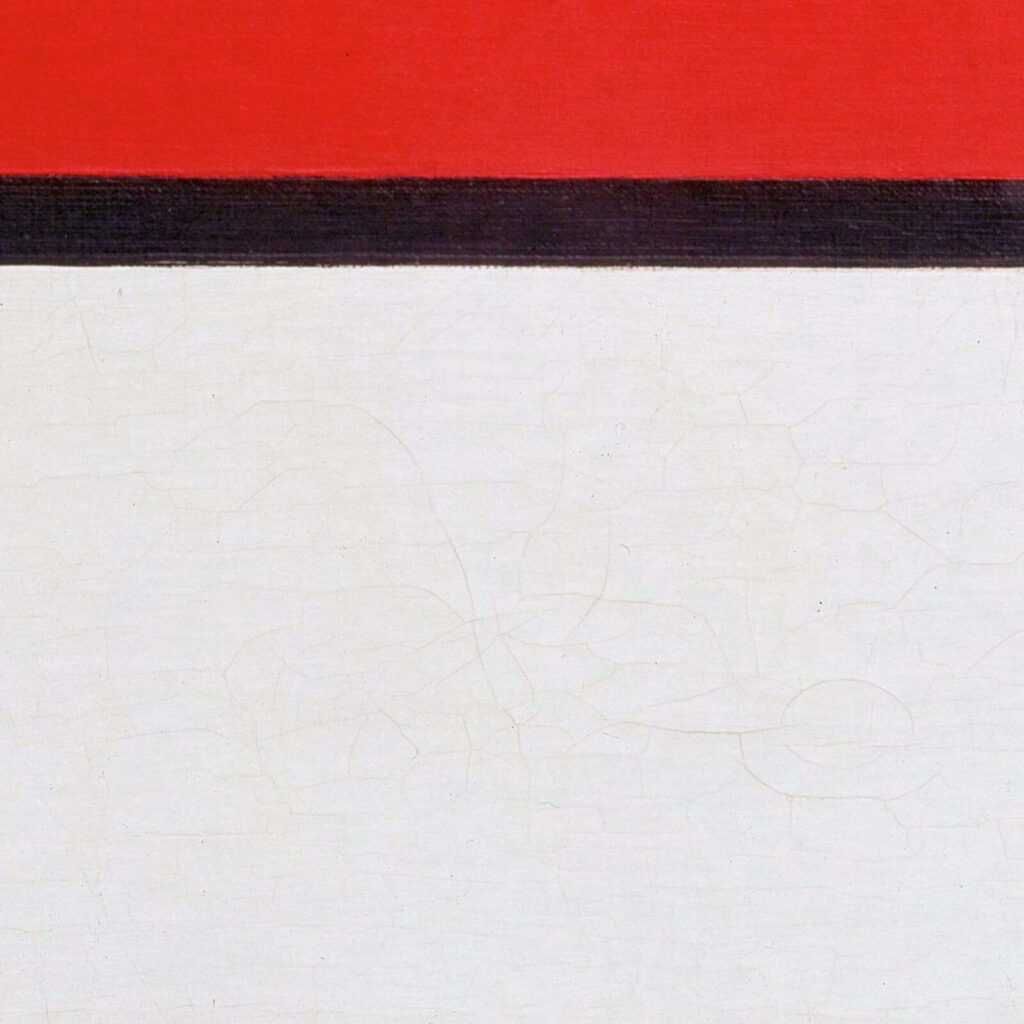
Piet Mondrian, Composition with Red, Blue and Yellow, 1930, Kunsthaus Zürich, Switzerland. Detail. Wikimedia Commons (public domain).
Alfred Roth donated Composition with Red, Blue and Yellow to the Kunsthaus Zürich, Switzerland in 1987 after owning it 57 years. With its ironclad provenance, the painting has become a cornerstone of the museum’s Classical Modernism department. Mondrian clearly appreciated Roth’s friendship as indicated by the handwritten dedication on the back. It reads, translated from the original French:
Dedicated to my dear friend and colleague Alfred Roth: To count only with rapport while creating them and while seeking their balance in art and in life, it is the beautiful work of today, it is preparing for the future.
Paris, January 30, 1930
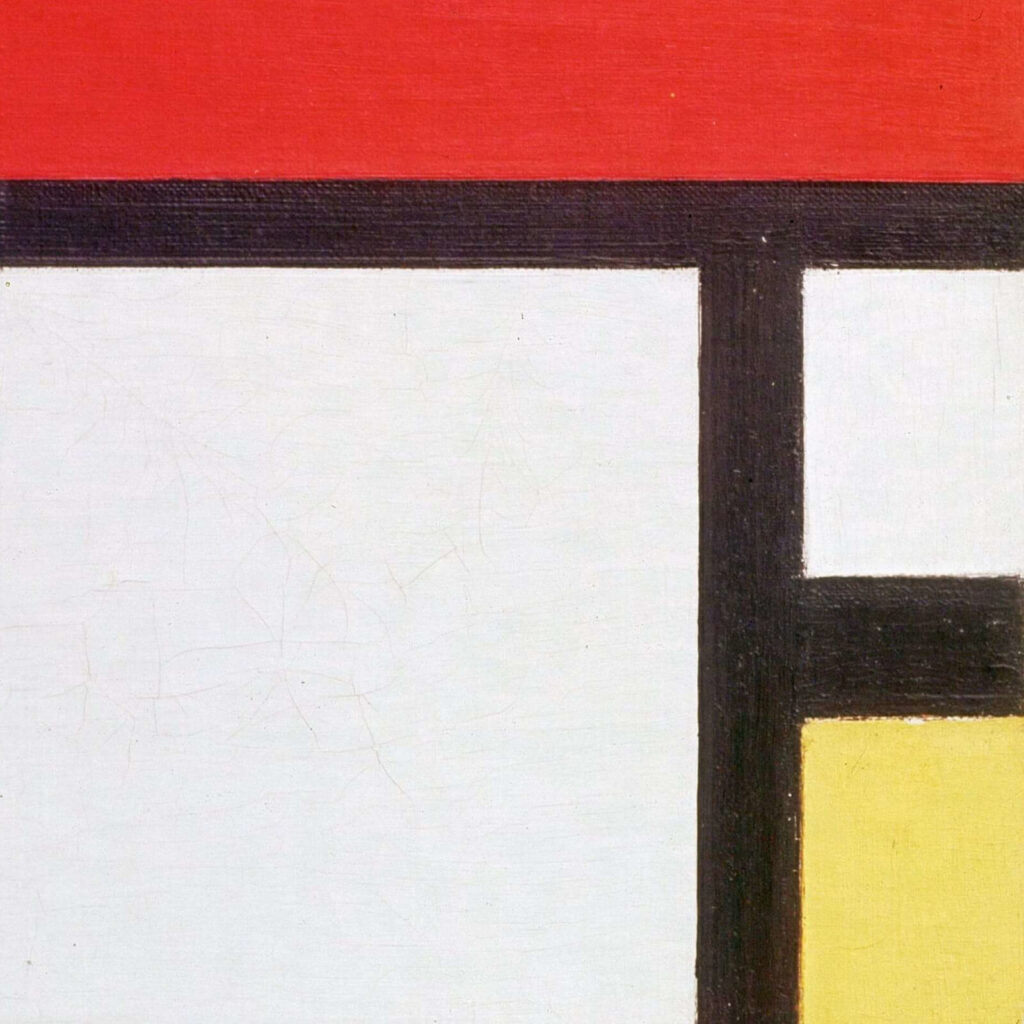
Piet Mondrian, Composition with Red, Blue and Yellow, 1930, Kunsthaus Zürich, Switzerland. Detail. Wikimedia Commons (public domain).
Composition with Red, Blue and Yellow is a golden example of Abstraction, De Stijl, and Constructivism. It presents a universal reality in a single frontal plane. It is a pattern of color, line, and direction. It is a pattern of artistic beauty.
Beckett, Wendy, and Patricia Wright. Sister Wendy’s 1000 Masterpieces. London, UK: Dorling Kindersley Limited, 1999.
“Classical Modernism.” Collection. Kunsthaus Zürich. Retrieved 28 December 2021.
“Composition with Red, Blue and Yellow.” Collection. Kunsthaus Zürich. Retrieved 28 December 2021.
“Composition with Red, Blue and Yellow.” Google Arts & Culture. Retrieved 28 December 2021.
“Composition with Red, Blue and Yellow.” Piet Mondrian. Retrieved 28 December 2021.
Gardner, Helen, Fred S. Kleiner, and Christin J. Mamiya. Gardner’s Art Through the Ages. 12th ed. Belmont, CA: Thomson Wadsworth, 2005.
DailyArt Magazine needs your support. Every contribution, however big or small, is very valuable for our future. Thanks to it, we will be able to sustain and grow the Magazine. Thank you for your help!